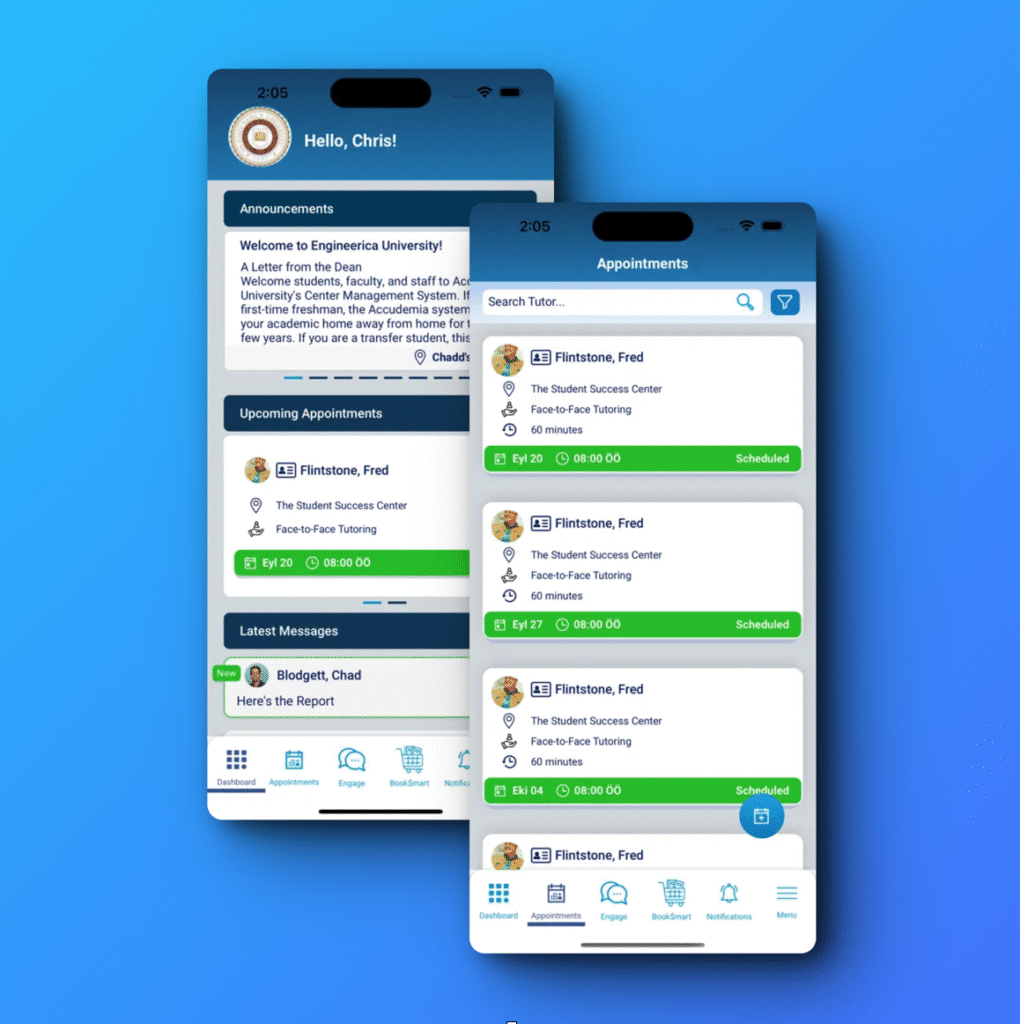Tutoring schedules do not fail because of big problems; they unravel through small, repeated inefficiencies. When appointments overlap, confirmations lag, or availability is unclear, a center pays in lost time and inconsistent service quality.
This article examines how academic centers can streamline appointment management from end to end, utilizing a purpose-built platform like Accudemia to standardize workflows, reduce no-shows, and uncover data that actually enhances outcomes.
What Efficient Scheduling Looks Like in Practice
An efficient tutoring day is predictable without being rigid. Appointments are booked against real availability, restrictions reflect center policy, and both students and tutors know exactly where to be and when. Communication is automated, yet personal enough to maintain trust. Most importantly, the system prevents edge cases from becoming fires, so attention stays on learning rather than logistics.
Aligning Policies With Reality
Policies only help if the software enforces them. Accudemia allows administrators to set maximum, default, and minimum session lengths, cap weekly bookings per student, define total allowed hours, and control how far in advance appointments can be made. These guardrails make access fair, reduce double booking, and keep peak times from being overwhelmed. Tutors benefit from clarity, while students experience consistent rules across locations.
Balancing Drop-ins and Bookings
Many centers offer both scheduled sessions and walk-ins. Accudemia accommodates each in a single system, so drop-in traffic does not cannibalize reserved time. Sign-ins from kiosks or web forms feed into the same records as appointments, producing one coherent picture of usage and demand. This balance protects tutor capacity while keeping services approachable for students who need quick help.
Building a Predictable Day With the Right Tools
Predictability grows when the platform handles the handoffs. In Accudemia, once a session is created, both parties receive an Outlook 365 invitation via email, and reminders follow automatically. If the meeting is virtual, the join link is included in confirmations and reminders. Documents such as notes, problem sets, and forms can be attached ahead of time, so the session starts with context rather than setup.
For readers evaluating options, a dedicated appointment scheduling software for tutors creates this predictability by aligning bookings, communications, and attendance in one workflow. Accudemia focuses on that alignment and is accessible from any browser with optional single sign-on.
Outlook 365 Two-way Sync
Accudemia integrates with Outlook 365 through a two-way calendar sync powered by a third-party utility. Appointments booked in Accudemia populate tutor calendars immediately, while updates in Outlook 365 flow back to reflect new availability. Reschedules or cancellations made in Outlook still adhere to Accudemia’s restrictions, and email notifications keep students informed. The result is a single source of truth that reduces back-and-forth and protects time blocks.
Reducing No-shows With Automation
No-shows are costly. Automated reminders via email and optional text reduce missed sessions, and configurable cutoff windows prevent last-minute bookings from creating chaos. When a student does not attend, Accudemia tracks no-show counts and can limit future scheduling until patterns improve. Small, consistent nudges keep the calendar reliable and enhance service delivery.
Data Discipline That Elevates Service Quality
Attendance data is only useful if it is complete and comparable. Accudemia unifies sign-ins, session logs, and feedback into consistent records that reveal demand by subject, day, and time. Over weeks, these signals inform staffing and open the door to targeted interventions. With the same dataset, administrators can evaluate whether limits are set correctly or if certain courses require more specialized coverage.

Controls That Enforce Fairness
Equity in access becomes operational when rules are enforced equally for everyone. With Accudemia, administrators can cap weekly sessions, set required buffers between appointments, and apply distinct rules by service or location. Students understand what is available and when, while tutors avoid overloaded schedules. Fairness moves from a stated value to an implemented system.
Reporting That Informs Staffing
Usage reports track peak periods, average session lengths, and outcomes captured in notes or feedback. Over time, patterns suggest where to extend hours, which tutors to assign to high-demand courses, and which services benefit from group sessions. Decisions stop relying on anecdotes and start reflecting measured need.
Implementation Checklist for Tutoring Teams
Adoption succeeds when the setup mirrors real operations and habits form quickly. Accudemia’s configuration maps to center policy, locations, and staff schedules, while simple daily actions keep data clean. The goal is a shared rhythm across administrators, staff, and students.
Setup Priorities for Admins
Map services and locations, define appointment types and lengths, and set caps that match demand. Connect single sign-on if available and enable the Outlook 365 two-way sync.
Configure reminder cadence, last-minute booking cutoffs, and no-show thresholds. Import staff schedules, then publish student-facing booking pages with clear instructions.
Habits for Tutors and Staff
Keep availability current by reviewing the next day’s calendar and attaching prep notes or materials to upcoming sessions. Record brief session notes and outcomes immediately after each meeting. When changes are necessary, reschedule within Outlook or Accudemia so that rules remain intact and notifications are sent automatically. These small habits compound into reliable data and smoother days.
Conclusion
Academic centers do not need more tools; they need one workflow that holds together. Accudemia centralizes booking, communication, attendance, and reporting in a way that reflects how tutoring actually happens, whether face-to-face or virtual.
By enforcing fair rules, syncing calendars, and automating reminders, the platform frees tutors to focus on instruction while giving administrators actionable insight. That is how appointment management stops being a friction point and becomes an advantage for students and staff alike.

